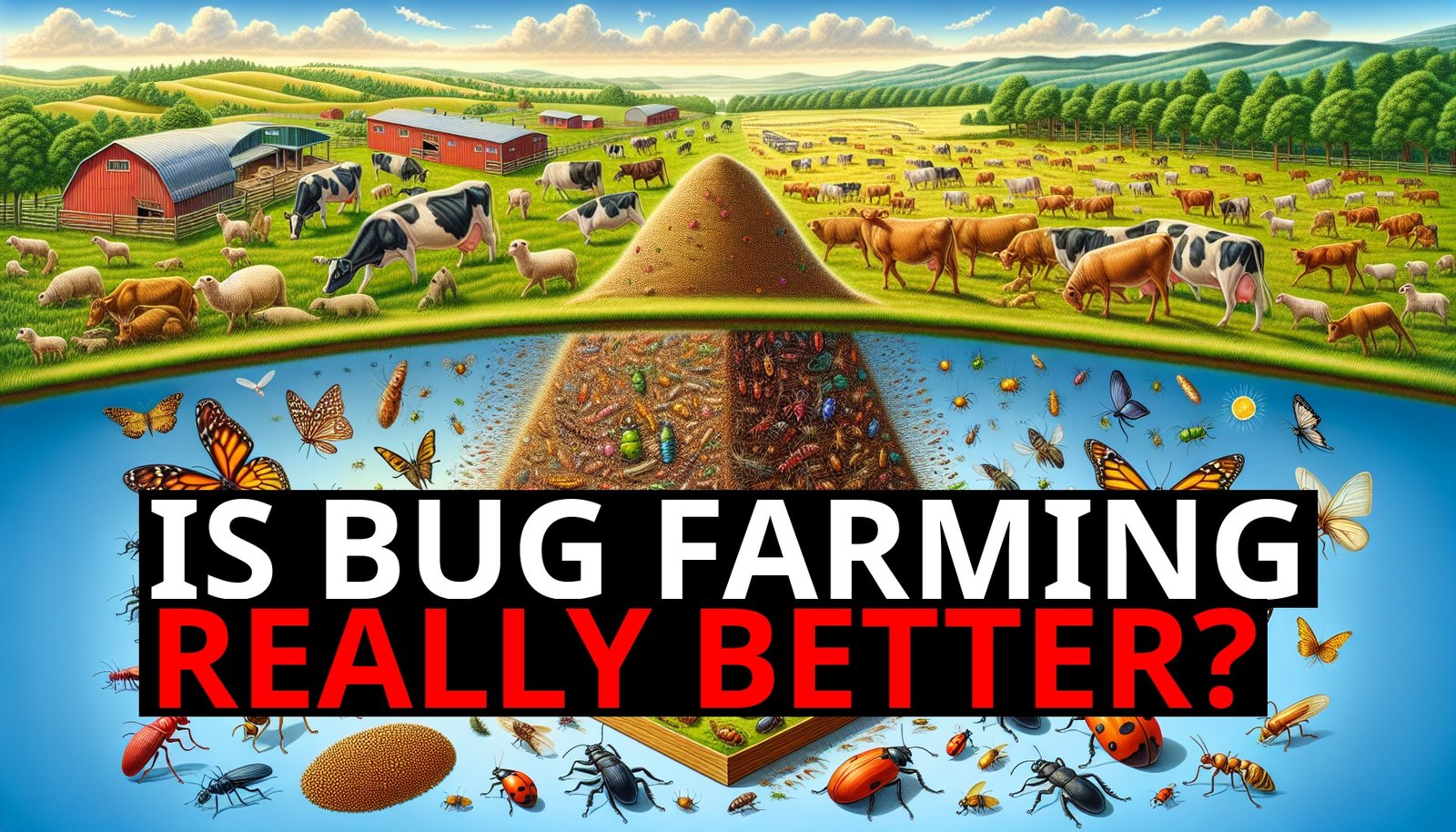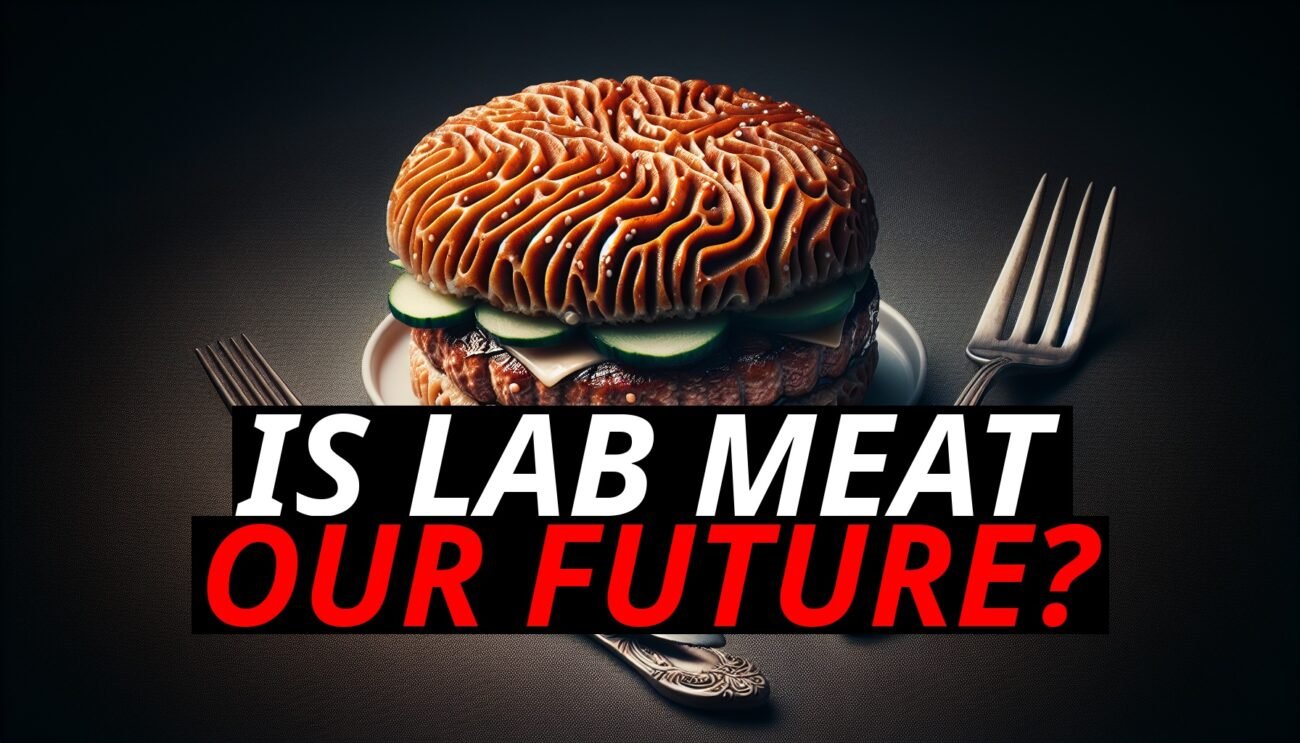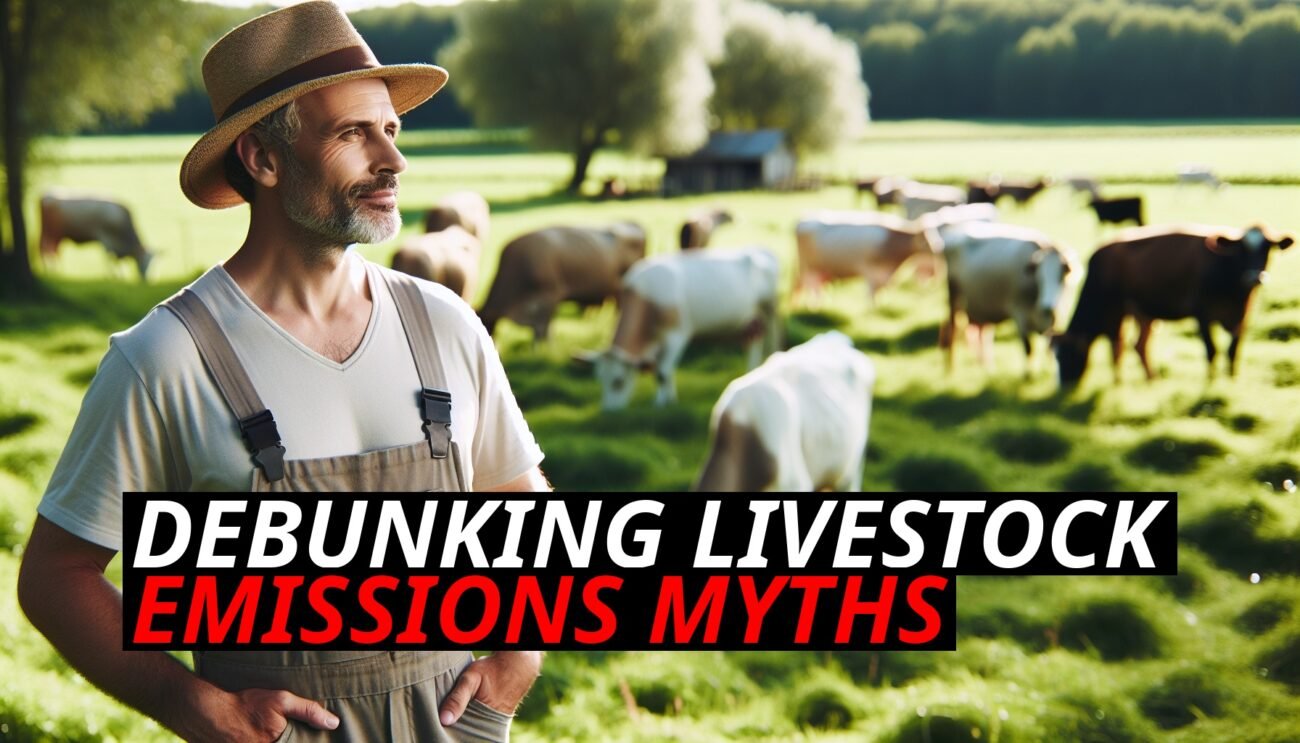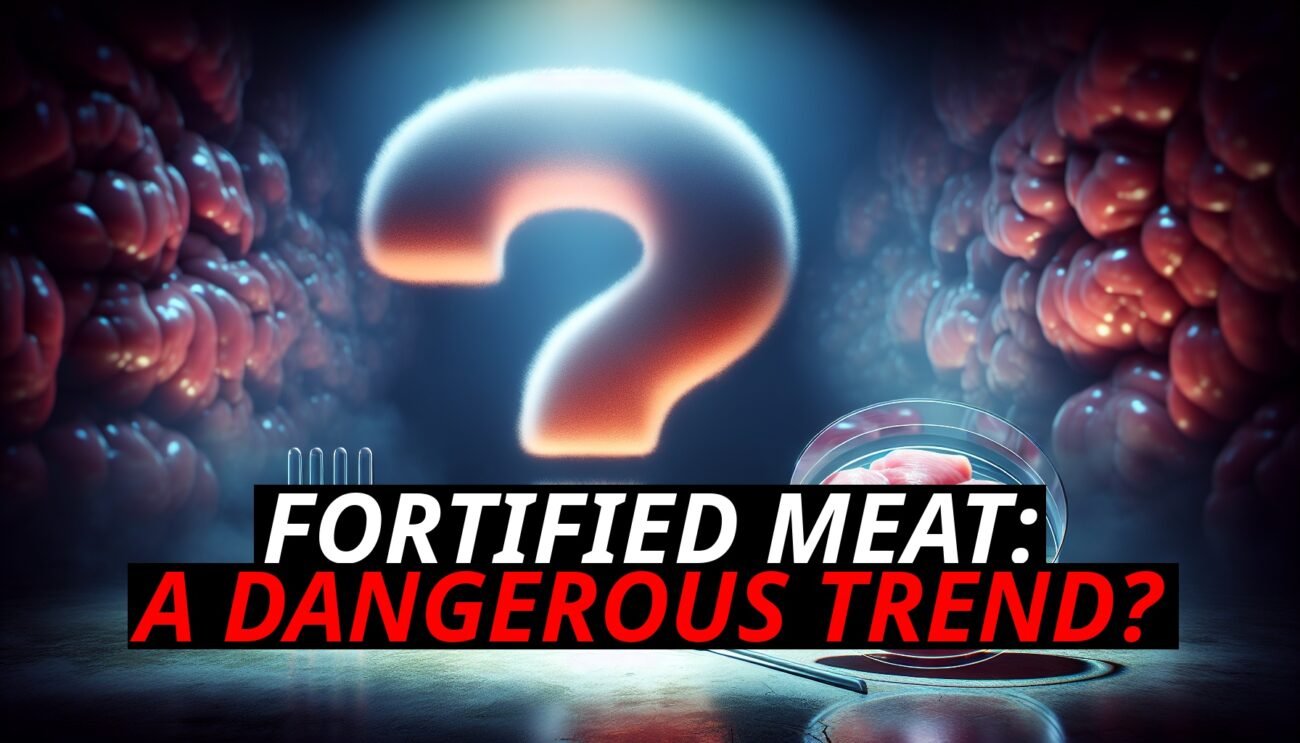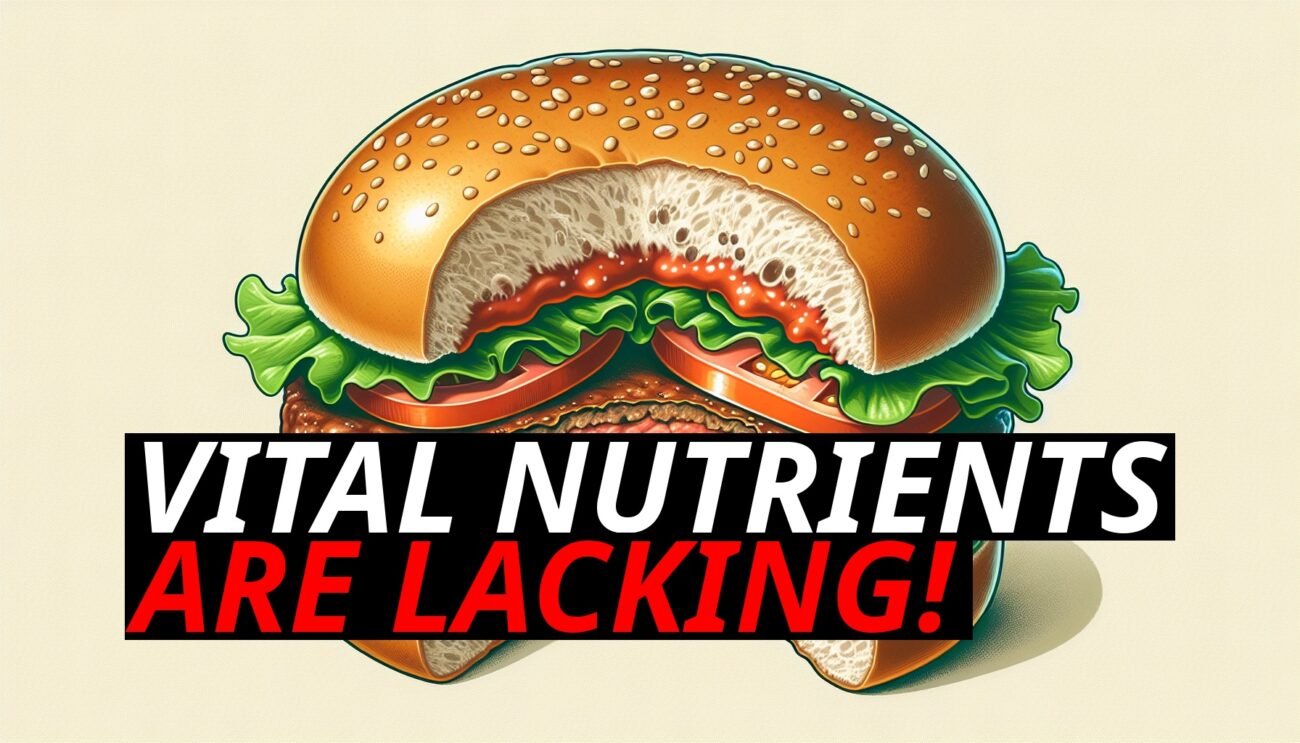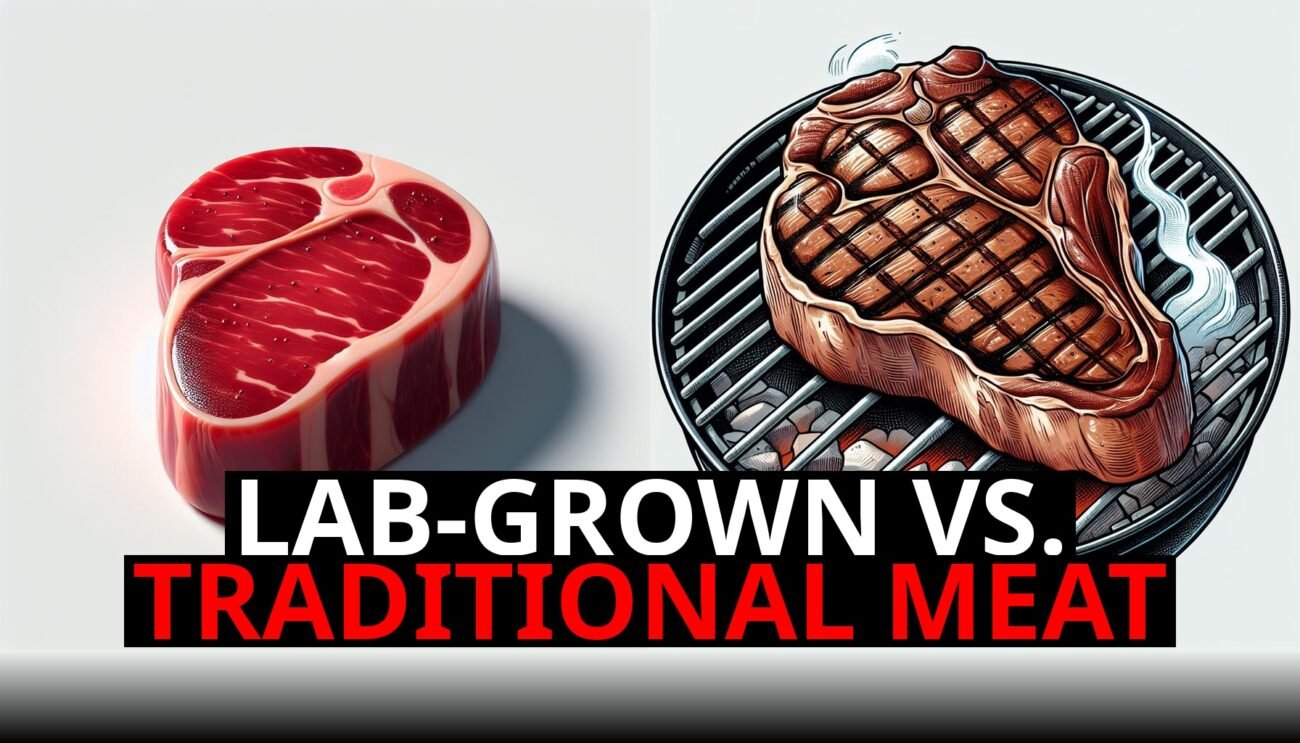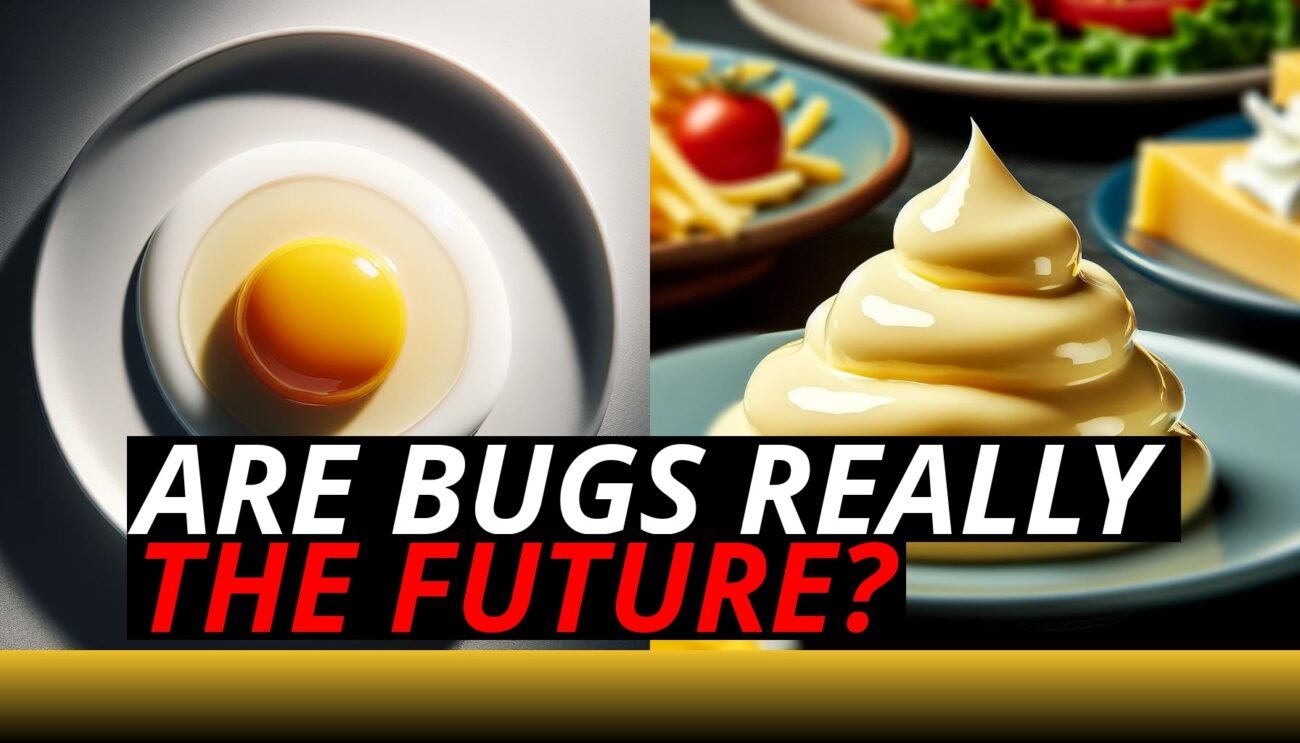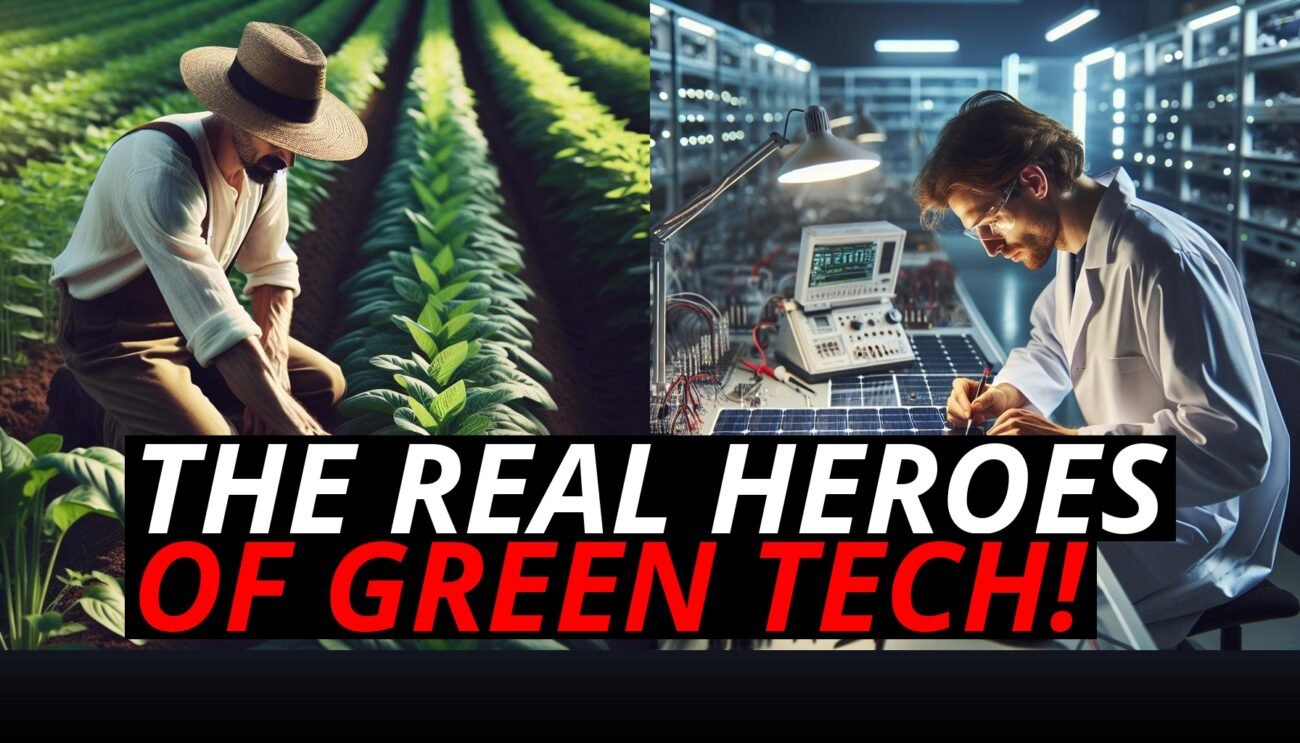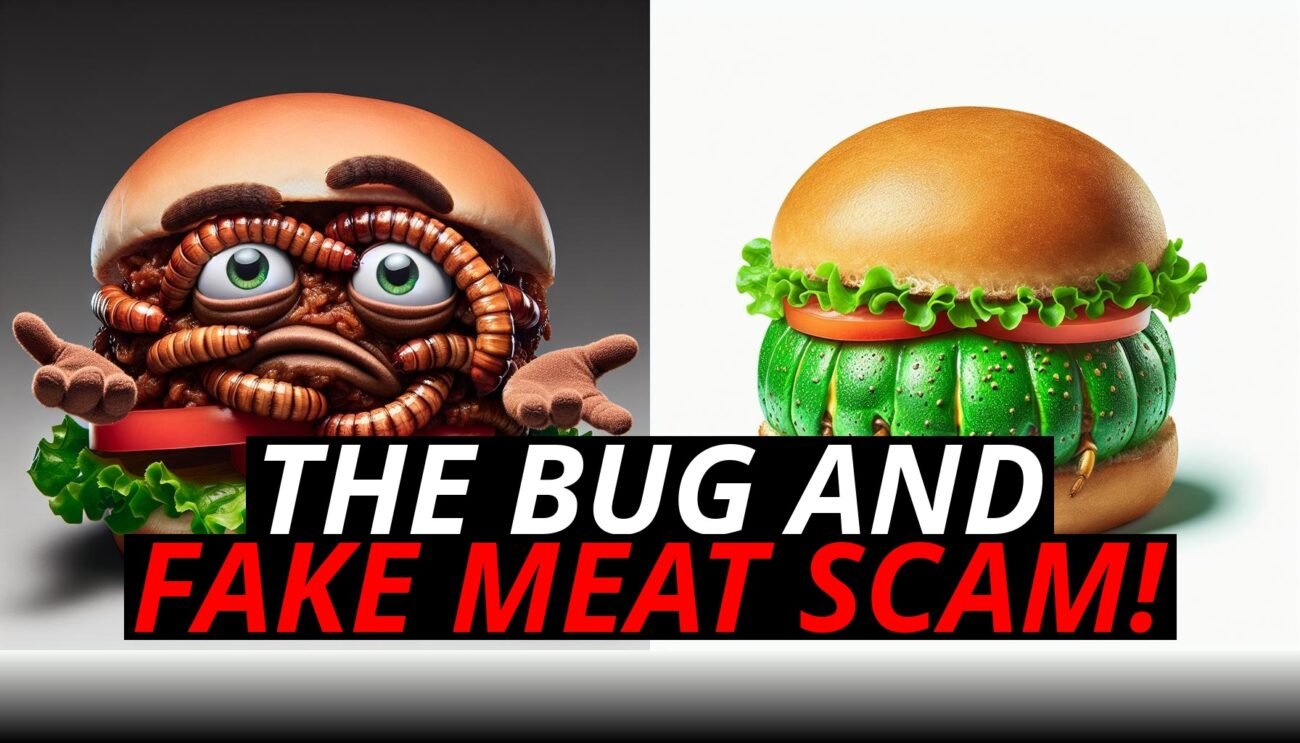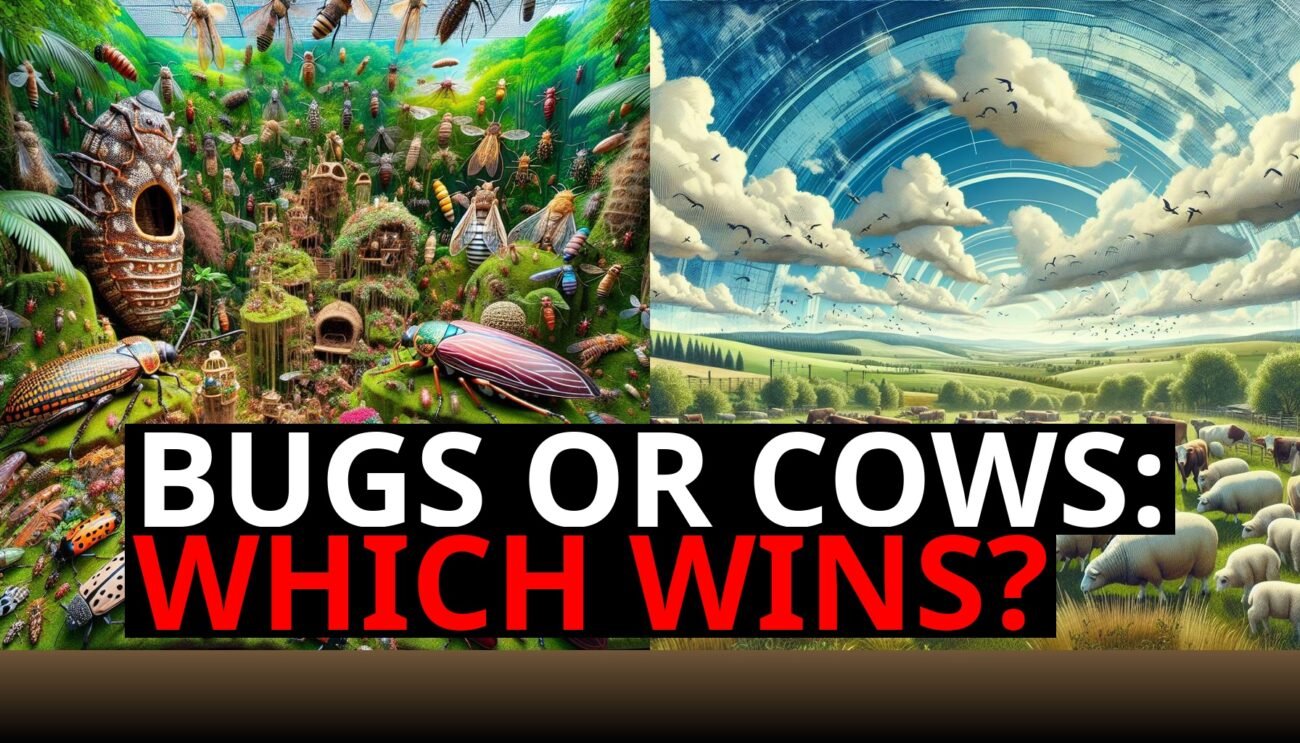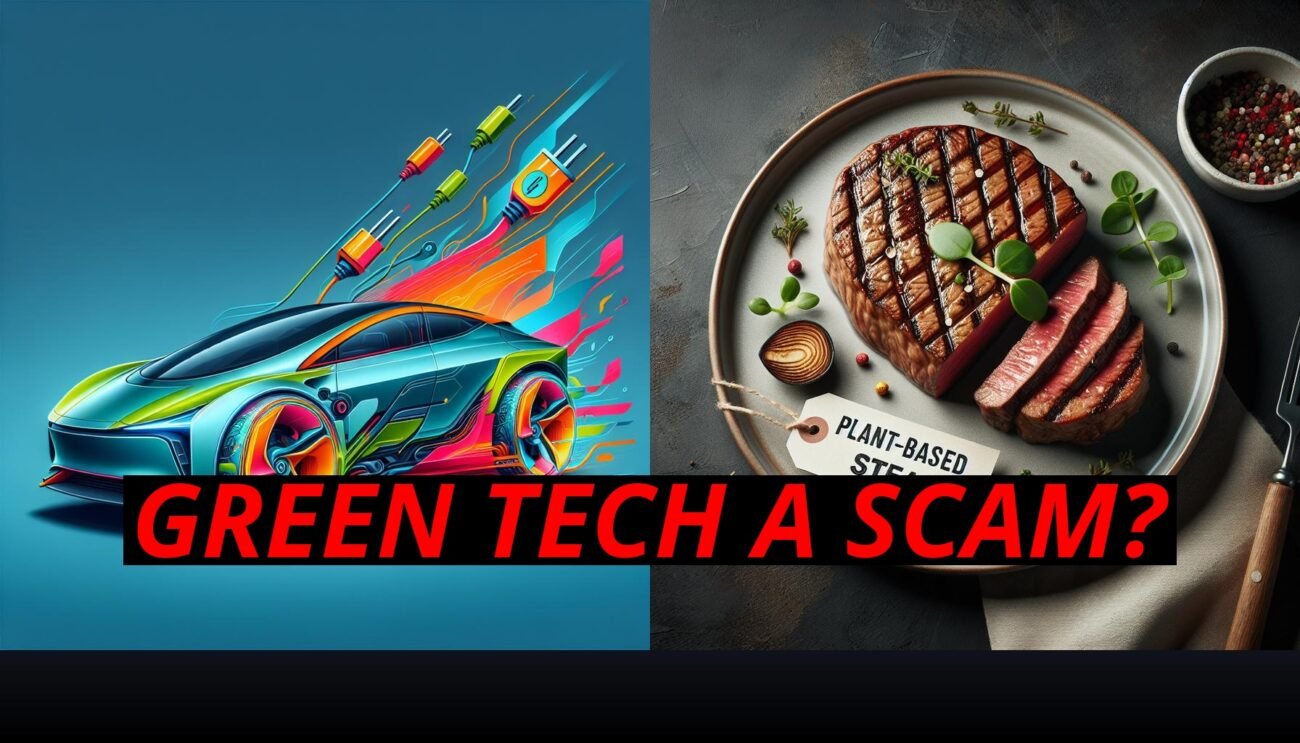In the rush to find sustainable solutions for feeding the planet, bug farming has been hailed as the answer to reducing the environmental footprint of food production. Advocates claim that insects are more efficient, use fewer resources, and have a smaller carbon footprint than traditional animal agriculture. But here’s the truth: when done responsibly, animal agriculture is actually more sustainable and efficient than the bug farming trend would have you believe.
Let’s break down the misunderstandings surrounding efficiency and explore why cows, chickens, and other livestock are still the best option for sustainable food production.
The Overlooked Efficiency Of Animal Agriculture
It’s easy to point to bugs as the ultimate efficient food source because they require less land and water per kilogram of protein than livestock. However, this simplified view misses the bigger picture of how animal agriculture works, particularly in regenerative systems.
Here’s why livestock are more efficient than you might think:
- Utilizing marginal land: Livestock like cows and sheep can graze on land that isn’t suitable for growing crops. This means they turn otherwise unusable land into a productive source of high-quality protein without competing with crops for space.
- Natural resource recycling: Livestock are part of a natural nutrient cycle. Their manure helps fertilize soil, improving its quality for growing crops. This closed-loop system reduces the need for synthetic fertilizers and keeps nutrients in the ecosystem.
- Multiple food products: Livestock provide more than just meat. Dairy, eggs, and fiber are renewable resources that don’t require the animal to be slaughtered. This continuous production of food without the need to replace the animal adds another layer of efficiency.
In contrast, bug farming relies on controlled environments with significant energy inputs to manage temperature and humidity. This means that while bugs might use less land, the energy cost of farming them at scale can actually make them less efficient than well-managed livestock.
The Environmental Benefits Of Regenerative Agriculture
One of the most compelling reasons animal agriculture is more sustainable than bug farming is the role of regenerative agriculture. When livestock are raised using regenerative practices, they not only produce food but also help restore ecosystems.
Here’s how regenerative agriculture makes livestock farming sustainable:
- Carbon sequestration: Livestock grazing encourages the growth of deep-rooted plants, which draw carbon dioxide from the atmosphere and store it in the soil. This process, known as carbon sequestration, helps offset the methane emissions produced by livestock.
- Soil health: Manure from livestock adds organic matter to the soil, improving its fertility and structure. Healthy soil retains more water, reducing the need for irrigation and making the land more resilient to drought.
- Biodiversity: Livestock grazing can maintain and enhance biodiversity by preventing certain plants from dominating the landscape and allowing a variety of species to thrive.
By working with natural systems rather than relying on artificial environments, regenerative agriculture helps create a more balanced and sustainable food production model. In contrast, bug farming often requires high-energy environments that can’t offer the same ecological benefits.
The Nutritional Edge Of Livestock
While bug farming is often promoted as an efficient way to produce protein, it falls short when compared to the nutritional value offered by traditional animal products. Livestock provide a more complete range of nutrients that are essential for human health.
Here’s why livestock are nutritionally superior:
- Complete proteins: Meat, eggs, and dairy from livestock provide all essential amino acids, making them a complete source of protein. While bugs can offer protein, they don’t provide the same well-rounded nutritional profile.
- Healthy fats: Livestock products are rich in healthy fats and fat-soluble vitamins like A, D, and E, which are crucial for many bodily functions. These nutrients are often lacking in insect-based diets.
- Calcium and minerals: Dairy products, in particular, are an excellent source of calcium and other essential minerals that are harder to find in insect-based foods.
Livestock not only provide more nutrient-dense food than bugs, but they do so in a way that aligns with cultural and culinary traditions worldwide. Insects may offer a novel source of protein, but they don’t compare to the nutritional completeness of animal products.
The Hidden Costs Of Bug Farming
Bug farming might sound like the environmentally friendly solution we’ve been waiting for, but there are significant hidden costs that are often overlooked. Bugs require very specific conditions to thrive, and maintaining these conditions on a large scale isn’t as green as it seems.
Here’s why bug farming may not be as sustainable as advertised:
- Energy consumption: Bugs need to be raised in climate-controlled environments, with precise temperature and humidity levels to ensure optimal growth. This requires a significant amount of energy, especially when compared to livestock that can graze naturally in outdoor environments.
- Processing and packaging: Insects often need to be processed into powders or bars to make them more palatable to consumers. This adds extra steps and energy to the supply chain, increasing the overall carbon footprint of insect-based foods.
- Specialized feed: While it’s true that some insects can be raised on organic waste, many bug farms require specialized feed to grow bugs at scale. This means that bug farming still competes with other agricultural systems for resources.
In contrast, properly managed livestock require minimal inputs beyond grazing and natural foraging, making them more energy-efficient and sustainable than bugs in the long run.
Why We Don’T Need To Replace Livestock
The push to replace livestock with bugs is based on the assumption that bugs are inherently more sustainable and efficient. But the reality is that responsibly managed livestock already offer a better solution for both nutrition and environmental sustainability.
Here’s why we don’t need to replace livestock with bugs:
- Livestock fit into natural ecosystems: Cows, chickens, and other livestock have been part of agricultural ecosystems for thousands of years. When managed properly, they enhance soil health, promote biodiversity, and provide valuable nutrients for both humans and the environment.
- Renewable resources: Livestock like chickens and cows don’t need to be slaughtered to provide food. Eggs, milk, and wool can be harvested continuously, offering a steady supply of nutrition and materials without depleting resources.
- Scalability: Traditional livestock farming is already well-integrated into food systems around the world, making it easier to scale up sustainably. Bug farming, on the other hand, requires the development of entirely new infrastructures, which come with their own environmental costs.
By focusing on improving sustainable livestock practices, we can continue to produce high-quality food in a way that benefits both people and the planet—without the need to turn to bugs as an alternative.
Conclusion: Embrace Sustainable Animal Agriculture
The narrative that bugs are the future of food is based on a misunderstanding of what true sustainability and efficiency look like in food production. While bug farming may offer some environmental advantages on a small scale, it can’t compete with the broader benefits of sustainable animal agriculture.
Cows, chickens, and other livestock, when managed responsibly, provide nutrient-rich food, support healthy ecosystems, and use resources more efficiently than bug farming ever could. Instead of trying to replace livestock, we should embrace the potential of regenerative agriculture and focus on improving the systems we already know work. Livestock farming, when done right, is not only sustainable—it’s the key to feeding a growing population while protecting the planet.

